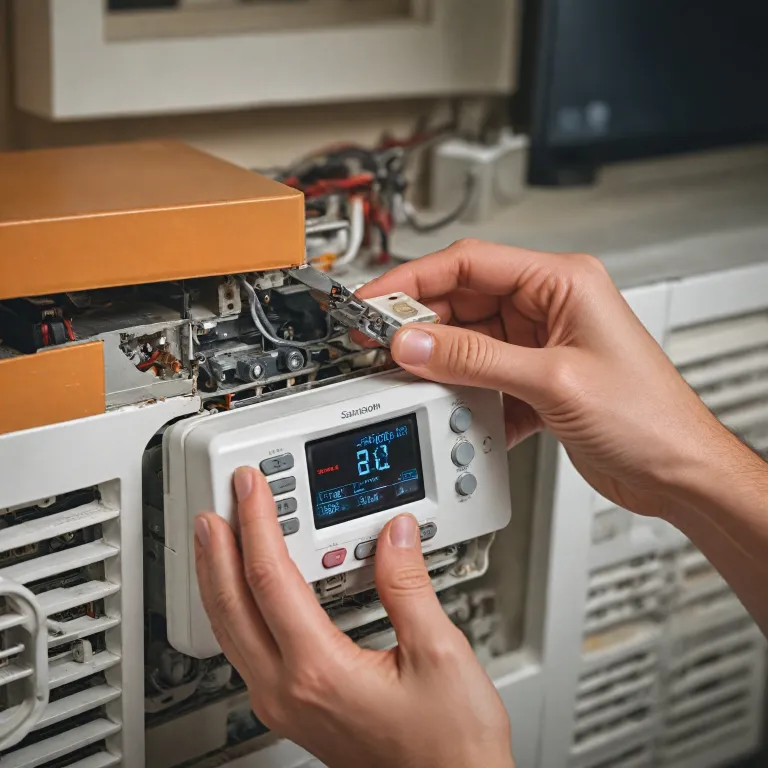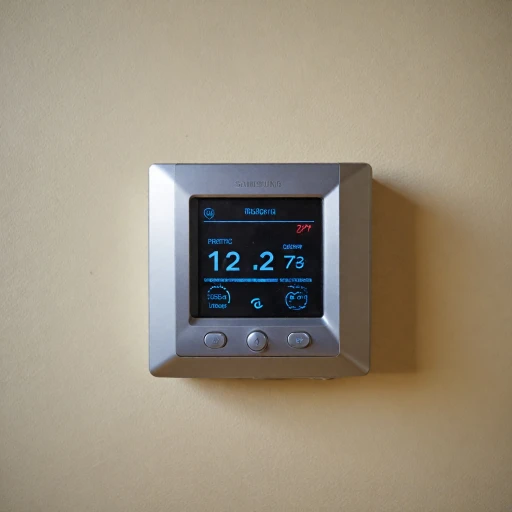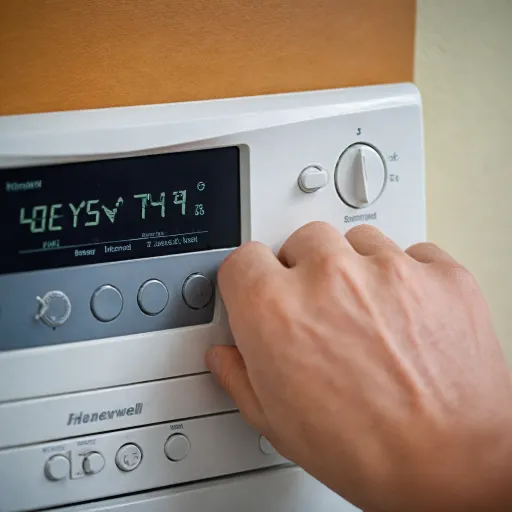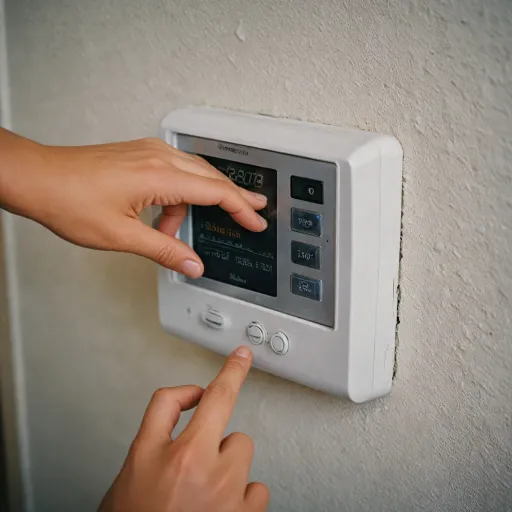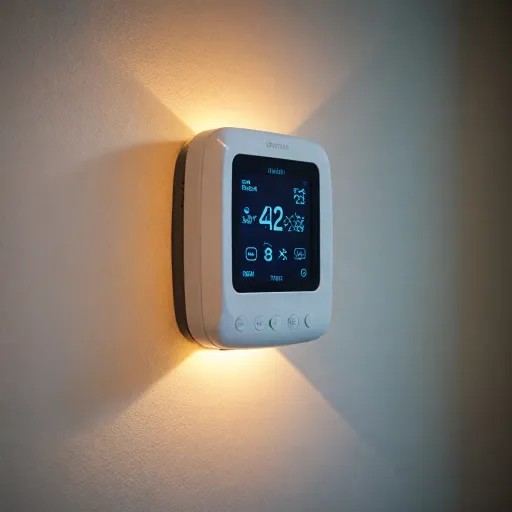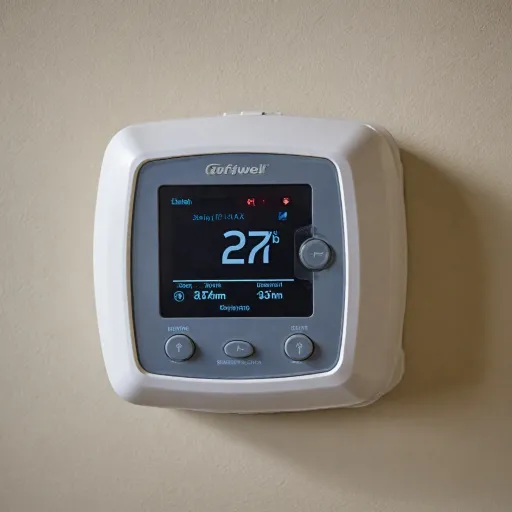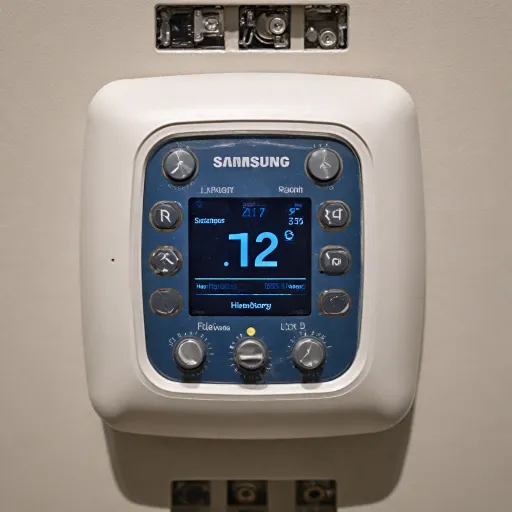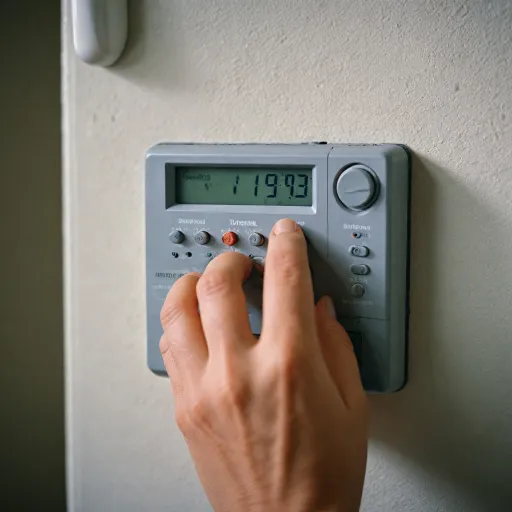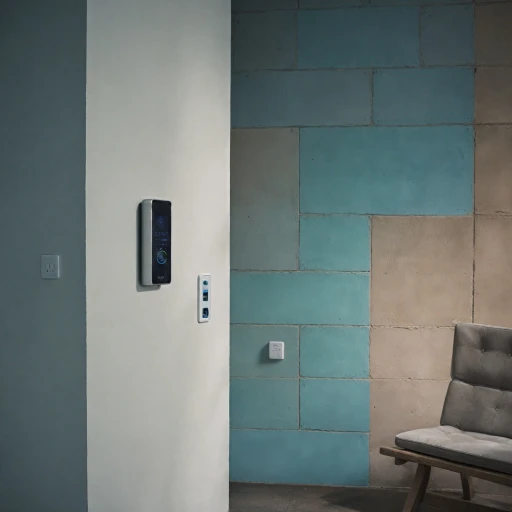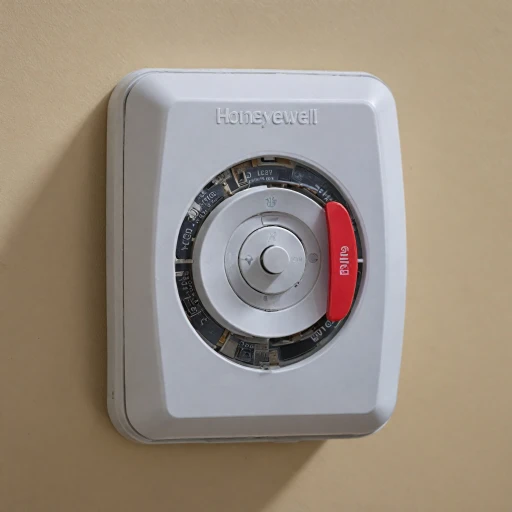
Understanding Your Honeywell Home Pro Series Thermostat
Getting to Know Your Honeywell Home Pro Series
The Honeywell Home Pro Series thermostat is a reliable and popular choice for managing your HVAC system effectively. This smart thermostat is designed to provide precise control over your home's heating and cooling, ensuring optimal comfort throughout the day. Understanding the essential features of your Honeywell thermostat will help you in case you need to perform a battery replacement or troubleshoot common issues. The Honeywell Home Pro Series comes equipped with user-friendly technology that makes adjusting temperature settings straightforward. It’s important to familiarize yourself with the layout of the unit, particularly the removable faceplate that houses the battery compartment. Knowing how to safely remove the thermostat from the wall and access the battery compartment can prevent unnecessary damage. Each Honeywell thermostat model might vary slightly, so reviewing your model’s specific manual is crucial. The manual provides detailed information on how to turn off the power to the system before handling the unit, which is a vital safety precaution. Make sure to reserve a dedicated time for this procedure to avoid rushing the process, as it ensures everything is done correctly. In identifying the right batteries for your thermostat, you help maintain its efficiency and prolong the device’s life. Consulting the manual model once again will guide you on the recommended batteries Honeywell suggests. Cross-referencing with reputable sources can offer additional insights into maintaining and maximizing thermostat efficiency. For further details on understanding the battery components in your Honeywell Home thermostat, you may find it useful to visit this comprehensive guide.Signs It's Time for a Battery Replacement
Recognizing When Your Thermostat Needs a New Battery
Replacing batteries in your Honeywell Home Pro Series thermostat is an essential part of maintaining your HVAC system's efficiency. Knowing when it's time for a battery replacement can prevent disruptions in heat or cooling control and ensure your comfort at all times. Here are some signs that your thermostat may need a battery replacement:
- Warning Notifications: Many Honeywell models provide a low battery warning—a clear signal that it's time to replace them. Ignoring this notification could lead to your thermostat shutting down unexpectedly.
- Decreased Performance: If the thermostat struggles to maintain the desired temperature settings, it might be operating on depleted power. This situation can affect the overall performance of your HVAC system.
- Display Issues: When the display dims or becomes unresponsive, it often points to weak batteries. Consider securing new batteries honeywell-related units immediately to prevent further problems.
Keeping an eye out for these indicators is crucial. Having a solid understanding of your Honeywell thermostat's battery-related concerns enhances your energy efficiency and maintains a consistent comfort level within your home. For more insights into the battery system for Honeywell thermostats, check out this informative guide.
Step-by-Step Guide to Replacing the Battery
Preparing for Battery Replacement
When undertaking a battery replacement for your Honeywell Home Pro Series thermostat, it's essential to gather all necessary tools and materials to ensure safety and efficiency. Begin by reviewing your thermostat's manual, specific to your model, to familiarize yourself with the process.
Gathering the Necessary Tools
- Screwdriver: Most models will require a small screwdriver to access the battery compartment.
- New Batteries: Select the appropriate type as specified in your user manual. Avoid mixing old and new batteries to prevent power issues.
Steps for Replacing the Batteries
- Turn off the HVAC System: For safety reasons, ensure that your HVAC system is powered off during this process. This minimizes the risk of any electrical shock or unit damage.
- Remove the Thermostat from the Wall Plate: Gently slide or pull the thermostat unit from the wall, taking care not to damage the unit or the wall mounting.
- Access the Battery Compartment: Refer to your manual to correctly open the battery compartment. Use a screwdriver if necessary.
- Replace the Batteries: Remove old batteries and insert new ones, ensuring correct polarity alignment as indicated in the compartment.
- Reattach the Thermostat: Carefully place the thermostat unit back onto the wall plate, ensuring it's securely mounted.
- Power Up and Test: Turn your HVAC system back on and check if the thermostat is functioning, adjusting settings to ensure the heat and cool systems respond appropriately.
Following these steps will not only facilitate a successful battery change but also extend the lifespan of your thermostat device, maintaining optimal heating and cooling efficiency throughout your home.
Choosing the Right Batteries
Selecting Suitable Battery Types
Choosing the correct batteries for your Honeywell thermostat is crucial to ensure it functions effectively. Honeywell thermostats are designed to work best with certain battery types, as specified in their unit manual. Generally, alkaline batteries are recommended due to their reliable power output and longer lifespan compared to other types. Avoid using rechargeable batteries, as they might not provide sufficient voltage for the thermostat's needs.
Understanding the Impact of Battery Type
When replacing the battery, it's essential to consider the model of your thermostat. Using the wrong type of battery can lead to issues such as insufficient power supply, which affects the efficiency of your HVAC system. The right choice of battery also impacts the unit's ability to maintain the desired heat levels and ensures that the thermostat plate stays securely attached to the wall without frequent disconnections.
Ensuring Compliance with Safety Guidelines
For optimal performance and safety, always follow the manufacturer's recommendations outlined in the device manual. This includes observing the correct orientation of the batteries when installing them. Honeywell, as an industry leader, reserves rights reserved policies on their product operation, ensuring you have access to effective customer support if you encounter any issues with your thermostat post battery replacement.
Troubleshooting Common Issues
Addressing Common Problems Post-Battery Replacement
Once you've performed a battery replacement for your Honeywell thermostat, you may encounter some issues that require troubleshooting to get your HVAC system functioning smoothly again. Using the manual provided for your specific model will greatly assist in this process.
- Thermostat Doesn't Turn On: Double-check the orientation of the new batteries within the unit. Improper installation could prevent it from powering up. The battery terminals in the back should securely contact the plate on the inside of the thermostat.
- Display Issues: If the screen appears blank or dim, confirm that the batteries you used are the correct ones specified for your model. Read the manual thoroughly if unsure. Remember, not all batteries are created equal and using incompatible ones might hinder device performance.
- Thermostat Not Responding: If your Honeywell thermostat is unresponsive after replacing the batteries, the battery contacts might be dirty or corroded. Carefully clean them with a soft cloth or contact cleaner to ensure good power conduction.
- Heating or Cooling Not Activating: Ensure that the thermostat is securely mounted in its wall position to fully engage the HVAC system contacts. Loose fitting can result in a disconnect, impacting HVAC functionality.
If issues persist beyond these common troubleshooting tips, you may need to consult a professional for deeper investigation or potentially revisit the installation guide. Prioritizing safety, never attempt to fix internal issues without proper expertise. In all scenarios, refer back to the manual for detailed guidance, as it serves as the first point of problem resolution.
Maximizing Thermostat Efficiency Post-Replacement
Enhancing Energy Efficiency and Performance After Battery Replacement
Pushing beyond just replacing the battery in your Honeywell thermostat can lead to improved energy efficiency and overall system performance. Here's how to ensure you maximize the efficiency of your thermostat and HVAC system after a battery replacement:- Regularly Review Thermostat Settings: Reevaluate the thermostat settings to match the current season or lifestyle. This includes setting optimal heat and cooling cycles.
- Keep the Unit Clean: Regularly cleaning the thermostat, including the wall and surrounding plate, can prevent dirt buildup. Dust can affect the sensor's ability to read room temperatures accurately, impacting efficiency.
- Utilize the Manual for Calibration: Use the thermostat's manual for any needed recalibration to ensure temperatures are displayed accurately. This is essential for maintaining the desired comfort level without overusing power and heat.
- Ensure the Proper Functioning of Components: Check that all connections within the thermostat and the HVAC system are secure. Loose connections can affect both thermostat performance and energy consumption.
- Check Compatibility with System Model: Make sure the thermostat is compatible with the HVAC system model. An incompatible unit can lead to inefficiencies or even damage.
- Monitor Power Consumption: After replacing the batteries, monitor your thermostat's power consumption. A sudden increase could indicate an issue that needs attention.
- Consider Advanced Thermostat Features: Utilize any available advanced features or integration with smart home systems to enhance efficiency.
